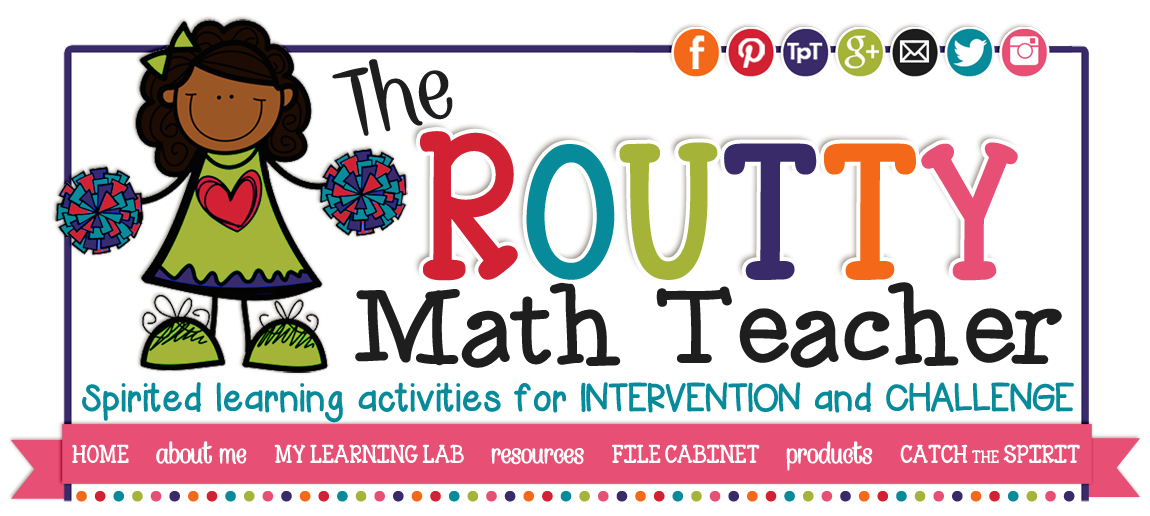Hello! The Routty Math Teacher has moved!
Come visit my new website at www.therouttymathteacher.com!
The Routty Math Teacher is a web-based company created to support K-8 mathematics instruction through blogging, collaboration, and instructional materials.




Mrs. K presented her fifth grade class with the following problem:
Farmer Brown’s niece Angie is in charge of her uncle’s farm while he is on vacation. He gave her strict instructions to make sure none of the animals ran away. When Angie counted the cows, chickens, and sheep, she counted 96 animals. There were three times as many chickens as cows and twice as many sheep as cows. How many sheep did she count?
As soon as Mrs. K presents the problem, the students begin to show signs of struggle and she overhears several students say that they do not know what to do. In order to respond to the students' cry for help, Mrs. K asks for the class's attention and then encourages the class to analyze the situation. Together, they begin to complete a KWC chart to identify what they know, what they want to know, and the special conditions for the problem. Mrs. K then begins a discussion to probe the students about what should be done next. After several suggestions have been offered, Mrs. K encourages the students to consider the ideas that were shared and choose a path to explore.If we analyze the scenario, we can see that the problem is within the students' depth of knowledge since it only requires knowledge of basic operations in order to obtain the solution. Understanding how to compute with basic operations is central to the mathematics of fifth grade. The algebraic foundation of this problem definitely requires students to make sense of it before beginning to tackle it; so, this becomes the place where students struggle productively. They have all of the tools necessary to solve the problem, but must create a solution strategy that will address the specifics of this task.

Farmer Brown’s niece Angie is in charge of her uncle’s farm while he is on vacation. He gave her strict instructions to make sure none of the animals ran away. When Angie counted the cows, chickens, and sheep, she counted 96 animals. There were three times as many chickens as cows and twice as many sheep as cows. How many sheep did she count?As soon as each teacher presents the problem, the students begin to show signs of struggle and the teachers overhear several students say that they do not know what to do.
 |
| Clipart by Pink Cat Studio |






